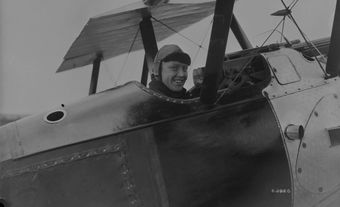Toronto Centre for the Arts
Toronto Centre for the Arts (North York Performing Arts Centre 1993-4, Ford Centre for the Performing Arts 1994-8). Performing arts complex, located at 5040 Yonge Street in Toronto. One of the largest arts complexes in Canada, the Toronto Centre for the Arts houses the Main Stage Theatre, the George Weston Recital Hall, and the Studio Theatre. It has been the permanent residence of the Toronto Philharmonia, Orchestra Toronto, and the Museum of Contemporary Canadian Art (1993-2005).
The idea for a large multi-purpose arts centre in the north end of the city began in the 1980s. Architectural firm Zeidler Roberts Partnership was chosen along with acoustician Russell Johnson (Artec Consultants Inc., New York) and theatre systems consultant Robert Lorelli (Robert Lorelli Associates Inc.). Fifty million dollars was raised by the private sector, and the complex, first known as the North York Performing Arts Centre, was officially opened by Mayor Mel Lastman on 17 Oct 1993.
For five years, the facility was managed by the Toronto-based theatre company, Livent Inc., headed by Garth Drabinsky and Myron Gottlieb. In 1994 the centre's name was changed to the Ford Centre for the Performing Arts. Livent brought many large-scale productions to the centre, such as the lavish revival of Jerome Kern and Oscar Hammerstein's musical Show Boat, for the centre's debut; Andrew Lloyd Webber's Sunset Boulevard (1995); and the world premieres of Ragtime (1996) and Fosse (1998). Livent also attracted international artists such as Dave Brubeck, Yo-Yo Ma, Ravi Shankar, and Kiri Te Kanawa, who opened the George Weston Recital Hall in 1993. Despite the centre's apparent success, scandal engulfed Livent in 1998 (Drabinsky and Gottlieb were later found guilty of fraud) and the company declared bankruptcy. The complex was taken over by the City of Toronto and was renamed the Toronto Centre for the Arts. In 2009, the Toronto Centre for the Arts began a partnership with Dancap Productions. Performances with Dancap included the touring productions of Cameron Mackintosh's My Fair Lady and the popular Broadway show, Jersey Boys.
The Theatres
The largest of the three halls is the Main Stage, with 1727 seats. Designed in a European style with a dress circle balcony and loges along the side, the hall has earned a reputation for its large-scale, Broadway-type productions. Special attention was paid to acoustical demands; the interior walls are slightly convex, to direct the sound inwards, while absorptive panels and curtains modify the acoustics according to the requirements of the production.
The George Weston Recital Hall, with a seating capacity of 1032, has long been regarded as one of the finest classical recital venues in the country, and can accommodate performances by soloists, chamber ensembles, and choral groups. Modelled after the Concertgebouw in Amsterdam and the Great Hall in Vienna's Musikverein, the rectangular hall features two levels of seating with a balcony surrounding the stage from above, thereby ensuring greater intimacy between audience and performer; as well as a fixed canopy and retractable curtains and panels. The centre's exterior shell and innovative ventilation system protect the hall from extraneous noise.
The 200-seat Studio Theatre is devoted to smaller-scale productions. Of the three halls, it is the most contemporary in design, with retractable seating and a full sprung floor, allowing for considerable flexibility. It can be used for multimedia events, cabaret-style entertainment, or film screenings.

 Share on Facebook
Share on Facebook Share on X
Share on X Share by Email
Share by Email Share on Google Classroom
Share on Google Classroom


